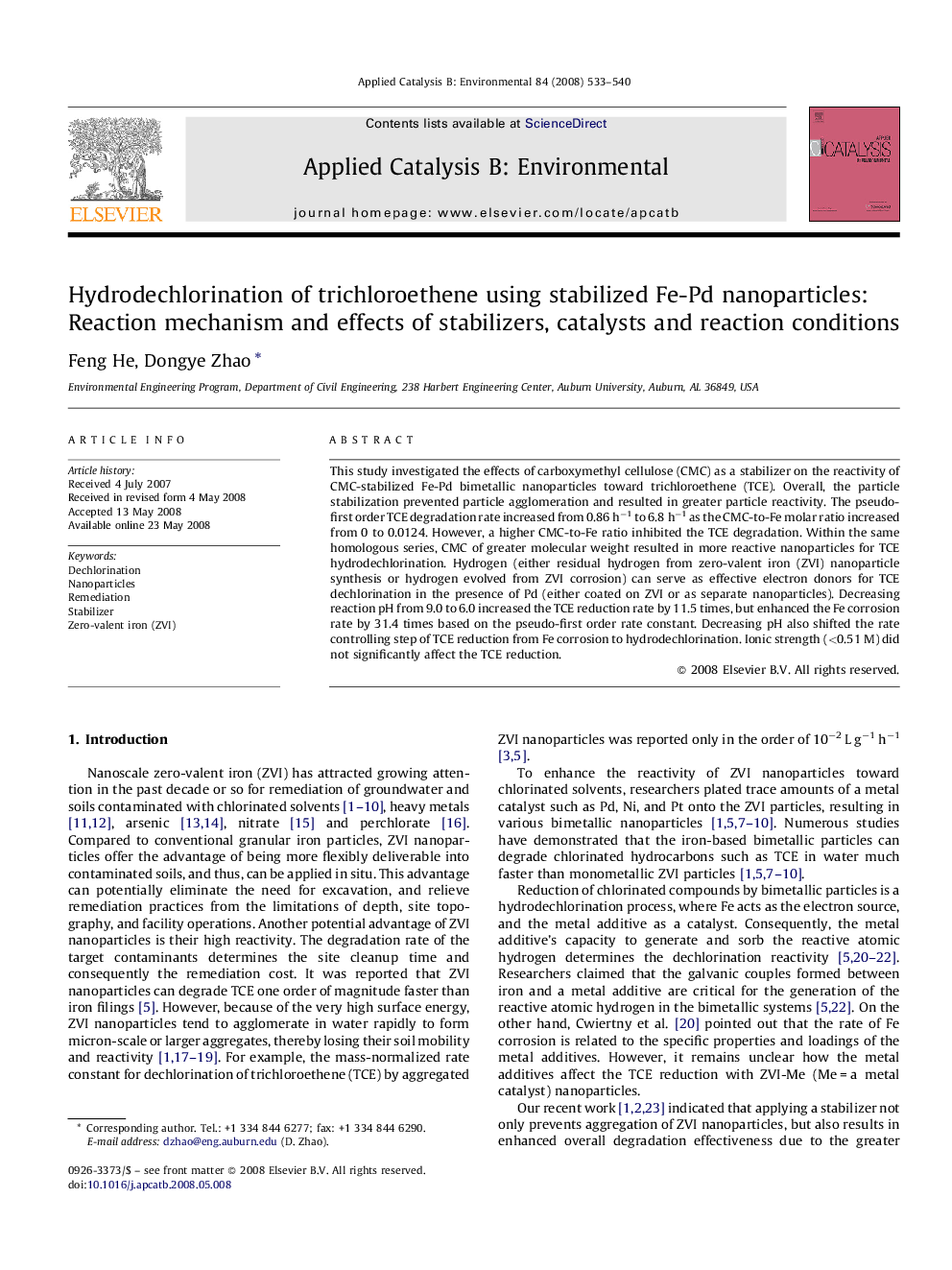| Article ID | Journal | Published Year | Pages | File Type |
|---|---|---|---|---|
| 48188 | Applied Catalysis B: Environmental | 2008 | 8 Pages |
This study investigated the effects of carboxymethyl cellulose (CMC) as a stabilizer on the reactivity of CMC-stabilized Fe-Pd bimetallic nanoparticles toward trichloroethene (TCE). Overall, the particle stabilization prevented particle agglomeration and resulted in greater particle reactivity. The pseudo-first order TCE degradation rate increased from 0.86 h−1 to 6.8 h−1 as the CMC-to-Fe molar ratio increased from 0 to 0.0124. However, a higher CMC-to-Fe ratio inhibited the TCE degradation. Within the same homologous series, CMC of greater molecular weight resulted in more reactive nanoparticles for TCE hydrodechlorination. Hydrogen (either residual hydrogen from zero-valent iron (ZVI) nanoparticle synthesis or hydrogen evolved from ZVI corrosion) can serve as effective electron donors for TCE dechlorination in the presence of Pd (either coated on ZVI or as separate nanoparticles). Decreasing reaction pH from 9.0 to 6.0 increased the TCE reduction rate by 11.5 times, but enhanced the Fe corrosion rate by 31.4 times based on the pseudo-first order rate constant. Decreasing pH also shifted the rate controlling step of TCE reduction from Fe corrosion to hydrodechlorination. Ionic strength (<0.51 M) did not significantly affect the TCE reduction.
